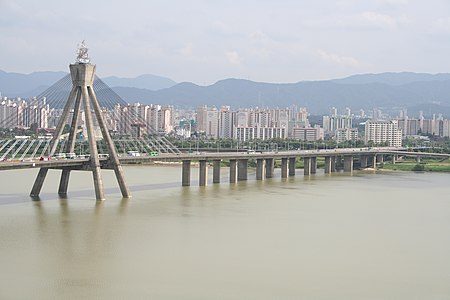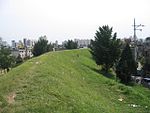Olympic Bridge
1990 establishments in South KoreaBridges completed in 1990Bridges in SeoulBuildings and structures in Gwangjin DistrictBuildings and structures in Songpa District ... and 3 more
Cable-stayed bridges in South KoreaSeoul stubsSouth Korea bridge (structure) stubs

Olympic Bridge or Grand Olympic Bridge (Korean: 올림픽대교) is a bridge over the Han River in Seoul, South Korea. The bridge links the Gwangjin and Songpa districts.
Excerpt from the Wikipedia article Olympic Bridge (License: CC BY-SA 3.0, Authors, Images).Olympic Bridge
Olympic-daero, Seoul Pungnap 1(il)-dong
Geographical coordinates (GPS) Address External links Nearby Places Show on map
Geographical coordinates (GPS)
| Latitude | Longitude |
|---|---|
| N 37.53396 ° | E 127.103855 ° |
Address
올림픽대교
Olympic-daero
05505 Seoul, Pungnap 1(il)-dong
South Korea
Open on Google Maps







